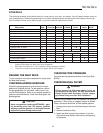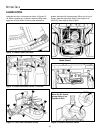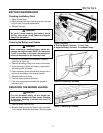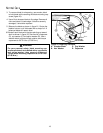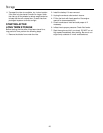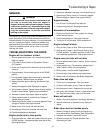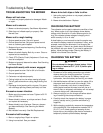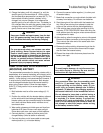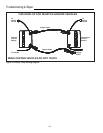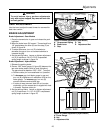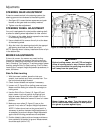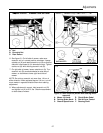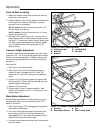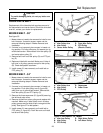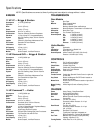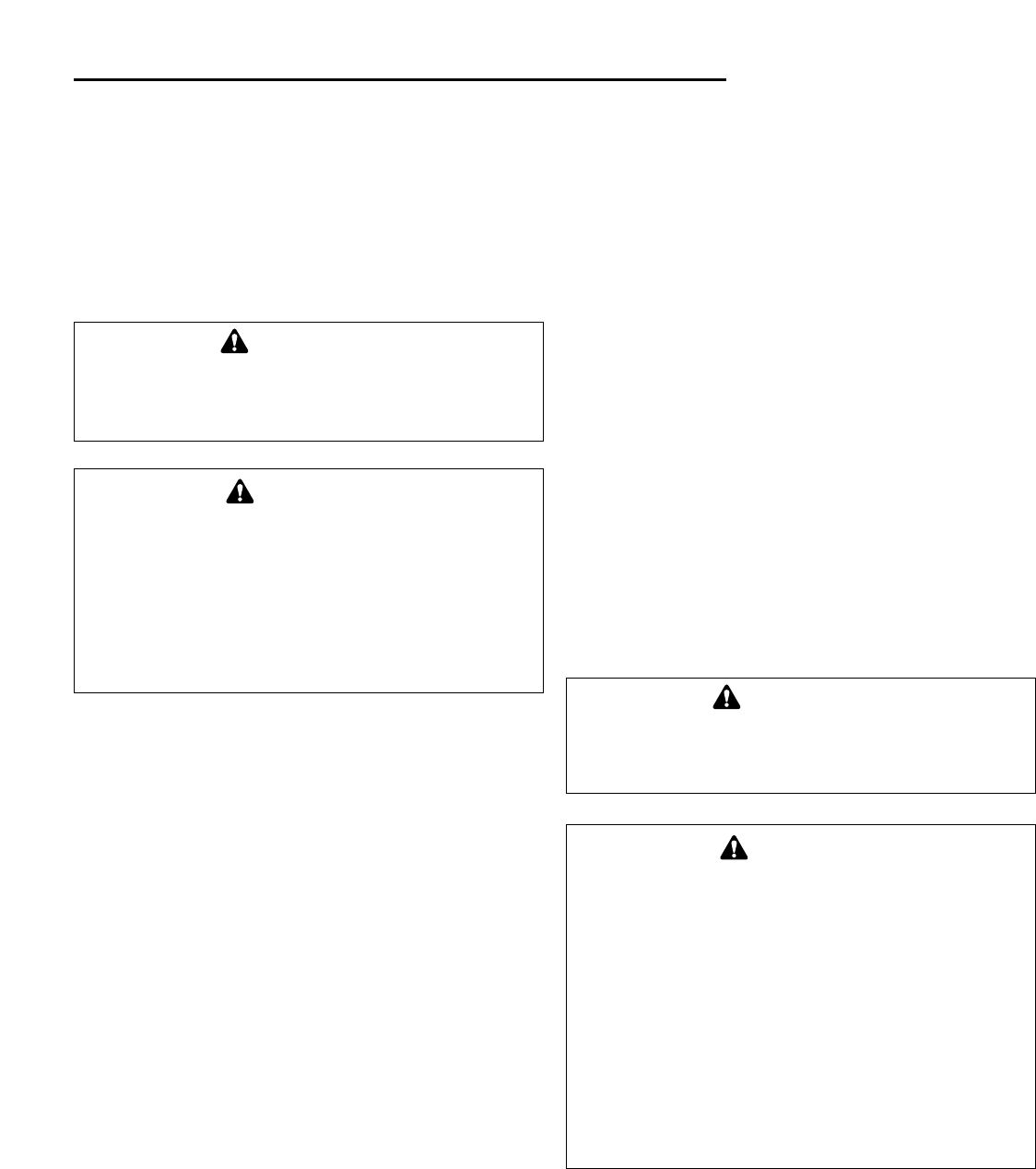
23
6. Charge the battery until fully charged (i.e. until the
specific gravity of the electrolyte is 1.250 or higher
and the electrolyte temperature is at least 60° F). The
best method of making certain a battery is fully
charged, but not over charged, is to measure the
specific gravity of a cell once per hour. The battery is
fully charged when the cells are gassing freely at low
charging rate and less than 0.003 change in specific
gravity occurs over a three hour period.
JUMP STARTING WITH AUXILIARY
(BOOSTER) BATTERY
The recomended preocedure for starting a tractor with a
dead battery is to remove the battery and charge it with a
battery charger as describes in the Charging the Battery
section. Jump starting is not recommended. However, if
it must be done, follow these directions. Both booster
and dis-charged batteries should be treated carefully
when using jumper cables. Follow the steps below
EXACTLY, being careful not to cause sparks. Refer to
figure 23.
1. Both batteries must be of the same voltage (6, 12,
etc.).
2. Position the vehicle with the booster battery adjacent
to the vehicle with the discharged battery so that
booster cables can be connected easily to the batter-
ies in both vehicles. Make certain vehicles do not
touch each other.
3. Wear safety glasses and shield eyes and face from
batteries at all times. Be sure vent caps are tight.
Place damp cloth over vent caps on both batteries.
4. Connect positive (+) cable to positive post of dis-
charged battery (wired to starter or solenoid).
5. Connect the other end of same cable to same post
marked positive (+) on booster battery.
6. Connect the second cable negative (-) to other post
of booster battery.
7. Make final connection on engine block of stalled vehi-
cle away from battery. Do not lean over batteries.
8. Start the engine of the vehicle with the booster bat-
tery. Wait a few minutes, then attempt to start the
engine of the vehicle with the discharged battery.
9. If the vehicle does not start after cranking for thirty
seconds, STOP PROCEDURE. More than thirty sec-
onds seldom starts the engine unless some mechani-
cal adjustment is made.
10. After starting, allow the engine to return to idle speed.
Remove the cable connection at the engine or frame.
Then remove the other end of the same cable from
the booster battery.
11. Remove the other cable by disconnecting at the dis-
charged battery first and then disconnect the oppo-
site end from the booster battery.
12. Discard the damp cloths that were placed over the
battery vent caps.
Troubleshooting & Repair
WARNING
For your personal safety, use extreme care when
jump starting. Never expose battery to open
flame or electric spark – battery action generates
hydrogen gas which is flammable and explosive.
Do not allow battery acid to contact skin, eyes,
fabrics, or painted surfaces. Batteries contain a
sulfuric acid solution which can cause serious
personal injury or property damage.
WARNING
To avoid engine damage, do not disconnect bat-
tery while engine is running. Be sure terminal
connections are tight before starting.
WARNING
Keep open flames and sparks away from the bat-
tery; the gasses coming from it are highly explo-
sive. Ventilate the battery well during charging.
WARNING
Any procedure other than the preceding could
result in: (1) personal injury caused by elec-
trolyte squirting out the battery vents, (2) per-
sonal injury or property damage due to battery
explosion, (3) damage to the charging system of
the booster vehicle or of the immobilized vehicle.
Do not attempt to jump start a vehicle having a
frozen battery because the battery may rupture
or explode. If a frozen battery is suspected,
examine all fill vents on the battery. If ice can be
seen or if the electrolyte fluid cannot be seen, do
not attempt to start with jumper cables as long
as the battery remains frozen.



